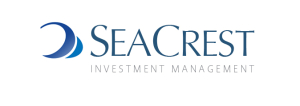World stock markets moved significantly lower during the quarter; the S&P 500 Index fell 16.1%,
the NASDAQ composite dropped 22.2%, the Dow Jones Industrial Average declined 10.7%, the
MSCI All Country World Index fell 15.5% and the Bloomberg U.S. Aggregate Bond Index moved
lower by 8.2%. For the first six-months of the year, the S&P 500 hadn’t performed so poorly
since 1970. US Treasury rates continued their 2022 surge during the last quarter across the
yield curve; the two-year treasury began the quarter at 2.33% and finished at 2.95%. Five-year
treasury rates surged from 2.46% to 3.04% and the ten-year treasury rates rose from 2.34% to
end the quarter at 3.01%. The abruptness of the rise in interest rates for investment grade bonds
since the beginning of 2022 was the largest since 1980. The current inversion of a part of the
yield curve remains an anomaly. Whether it portends a softening in the US economy or not, let
alone a recession, has yet to be determined. Curve inversion from the three-month bill to the
ten-year note continuing over the course of three months is a historically more reliable
indication of a forthcoming recession.
The Federal Reserve continued with its combined quantitative tightening (reducing the size of its
balance sheet aka. ‘balance sheet normalization’) and most recently raising rates 75 basis points
with another 50 to 75 basis points rise anticipated later this month. The question in the minds of
many is whether these 50/75 basis points move(s) will continue at future Federal Open Market
Committee (FOMC) meetings for the balance of 2022 or not. Historically, in the face of rampant
inflation, the FOMC continues to tighten until they ‘break something’, even if this results in a
recession.
As we have stated before market volatility will likely continue for the balance of the year. We are
concerned about a global equity and fixed income market correction of more substance than has
already occurred, later in 2022 and into 2023. Even with broad declines in equity prices year to date, valuations remain elevated. Comparative valuations to the 1999/2000 overvalued equity
markets cannot be and should not be ignored. Intermittent ‘bear market’ rallies of considerable
magnitude and subsequent declines might well be the norm for the balance of 2022. While fixed
income rates have climbed, the interest rate spread for investment and non-investment grade
securities still does not reflect realities in today’s inflation fueled economy.
The impact of the war in Ukraine cannot be assimilated into the global economy with any degree of
confidence. The human and economic tragedies are reminiscent of World War II. Moreover, profits
at US multinational companies will continue to be negatively affected by the war and the resultant
slowing of economies in Europe. These horrors and the aftermath of the pandemic means caution
in the global markets continues to be warranted, especially given the periodic emergence of new
Covid variants.
Our continuing search for and investment in undervalued assets requires patience and a healthy
dose of optimism for humanity.
